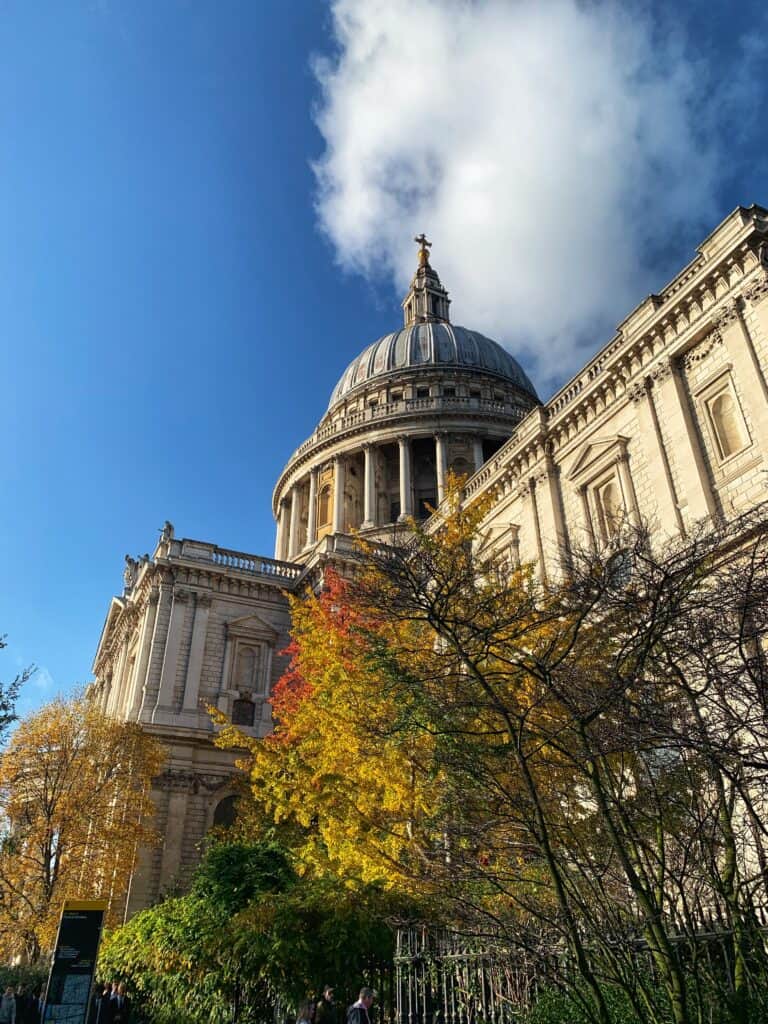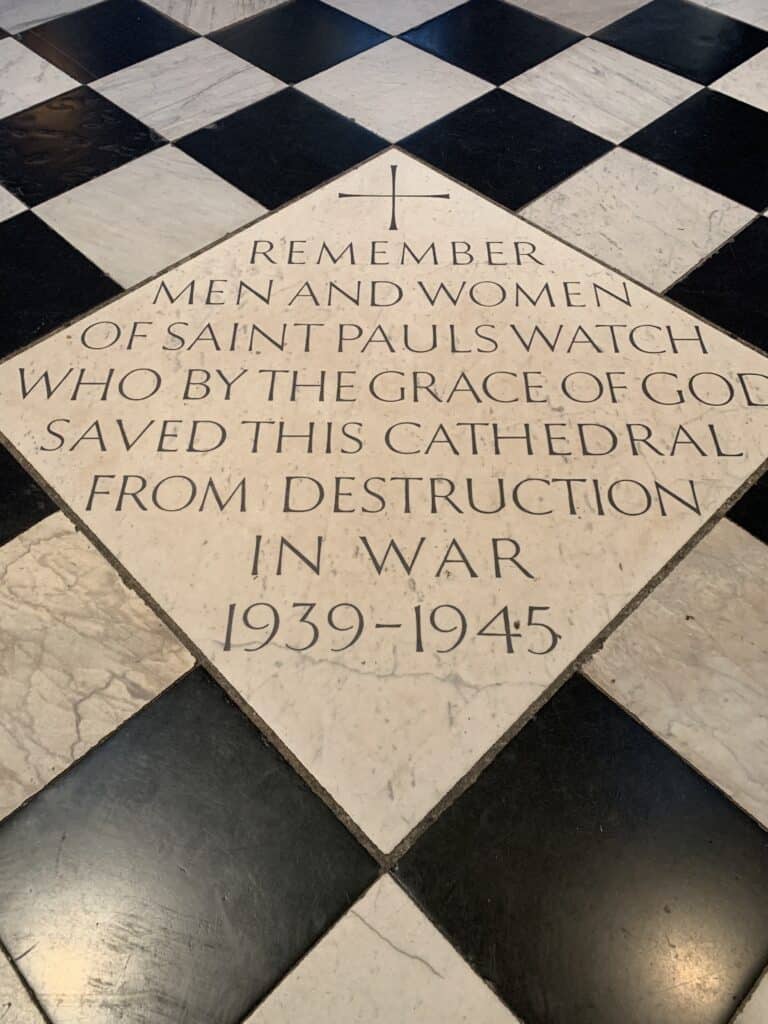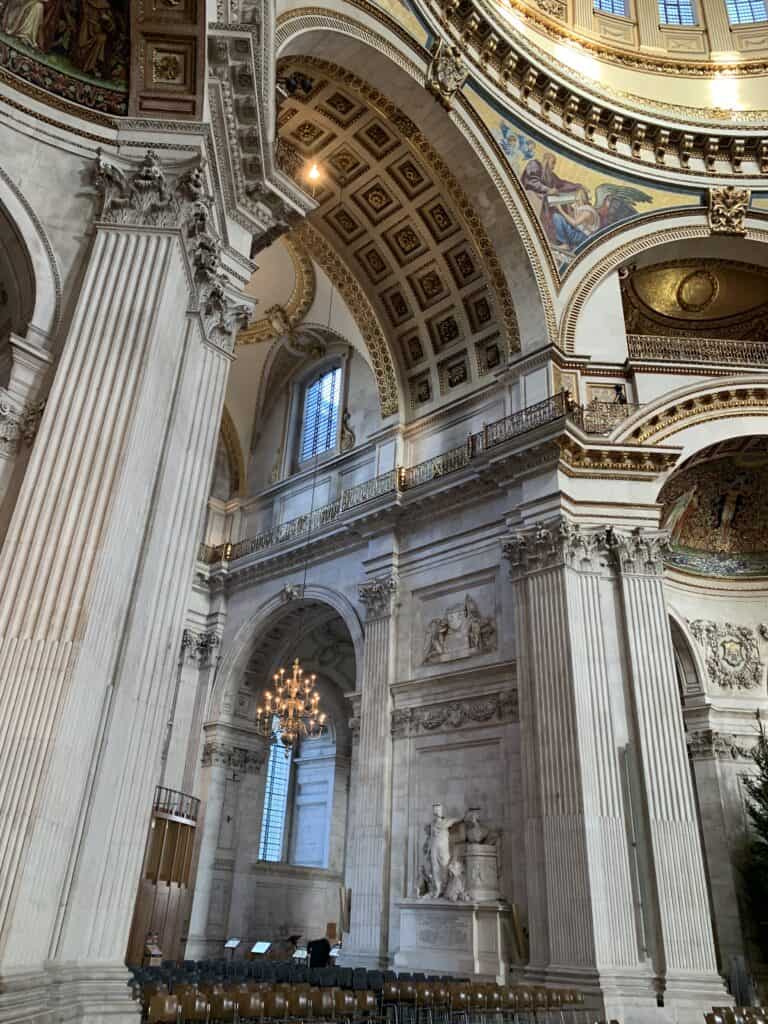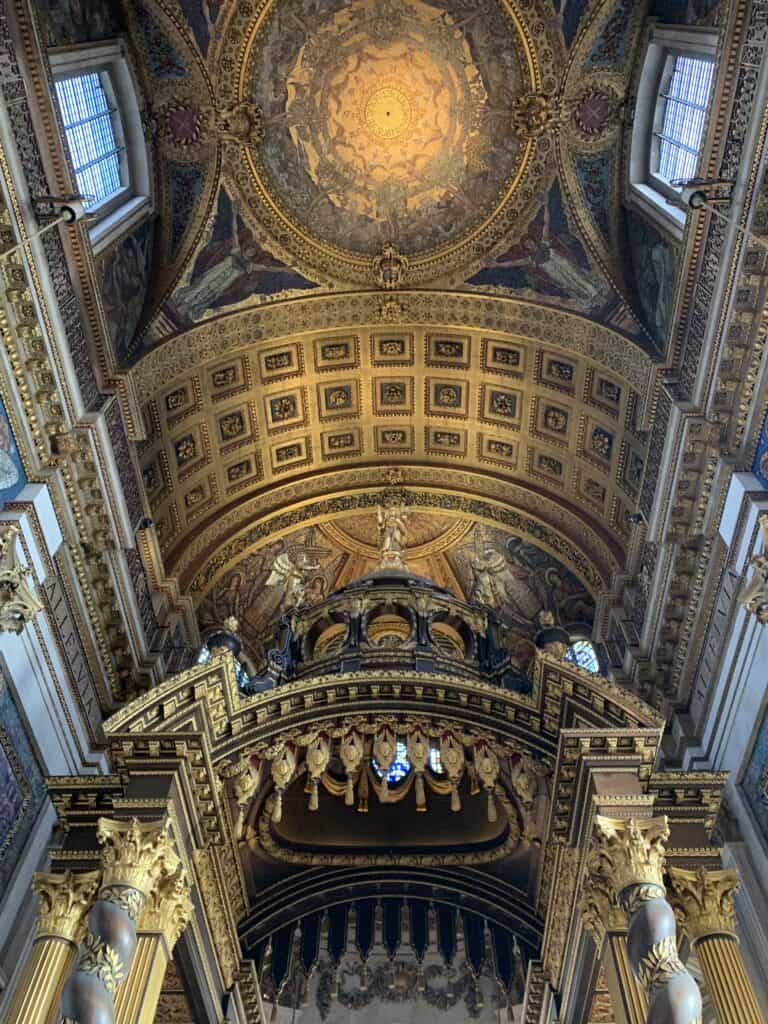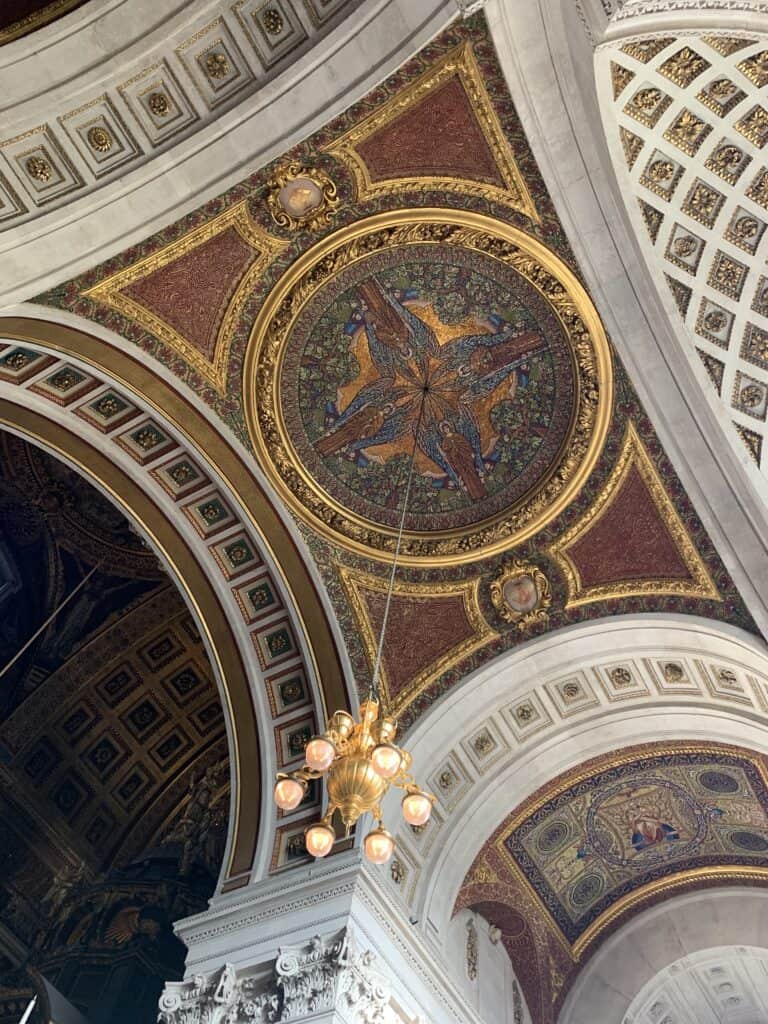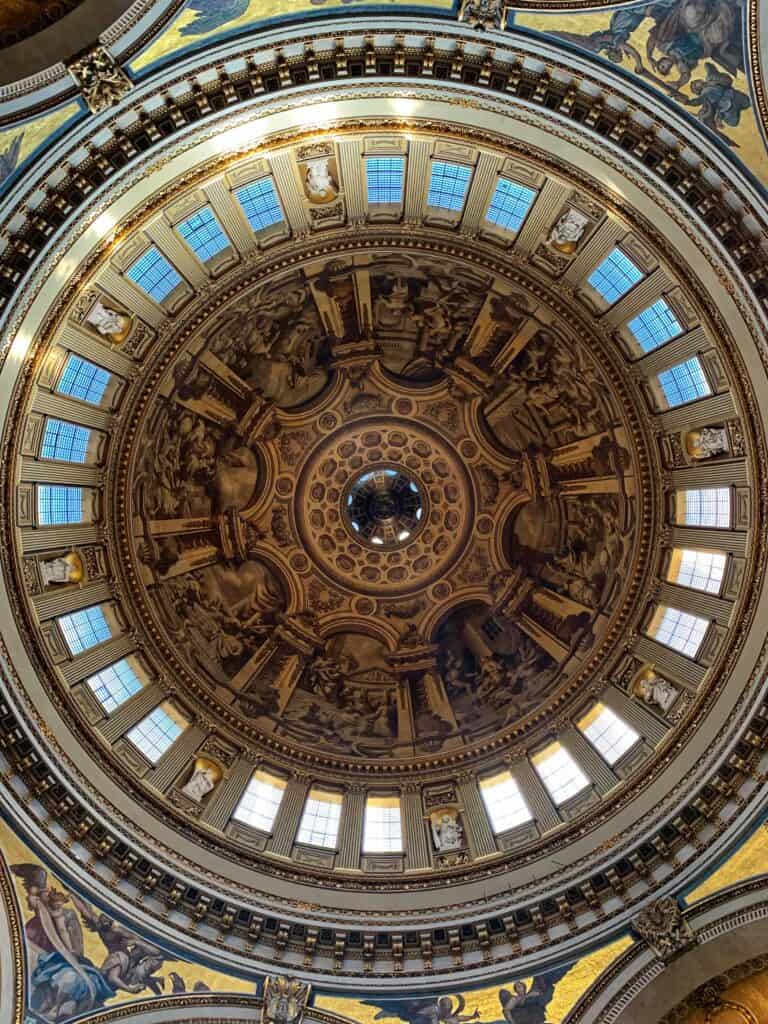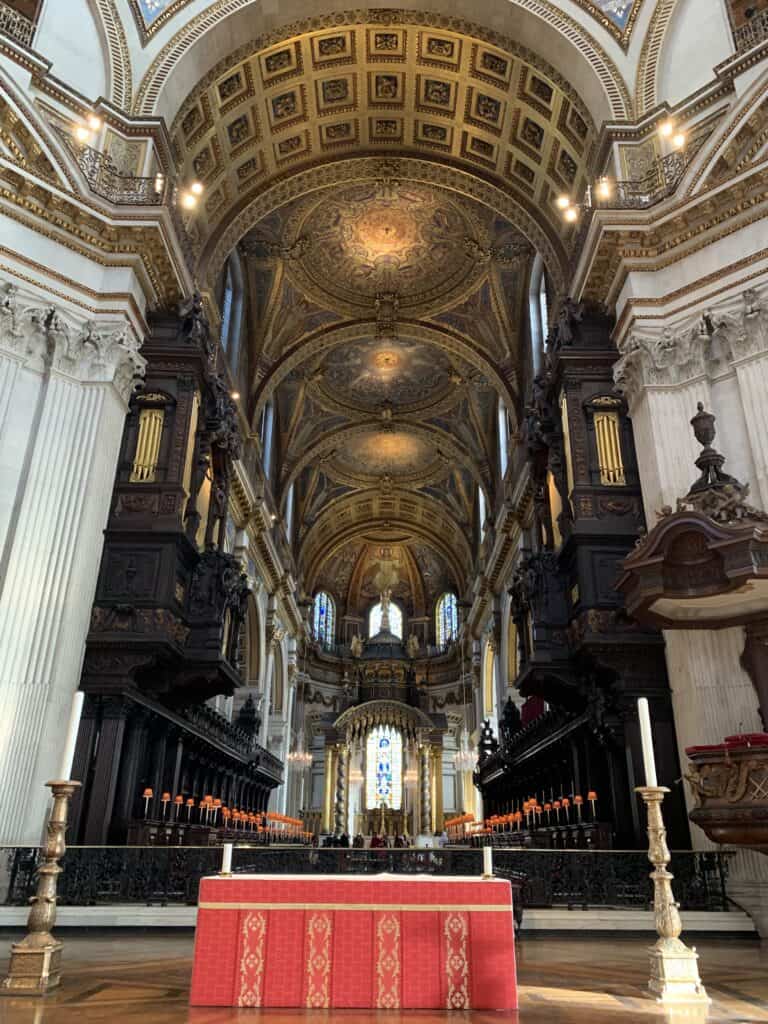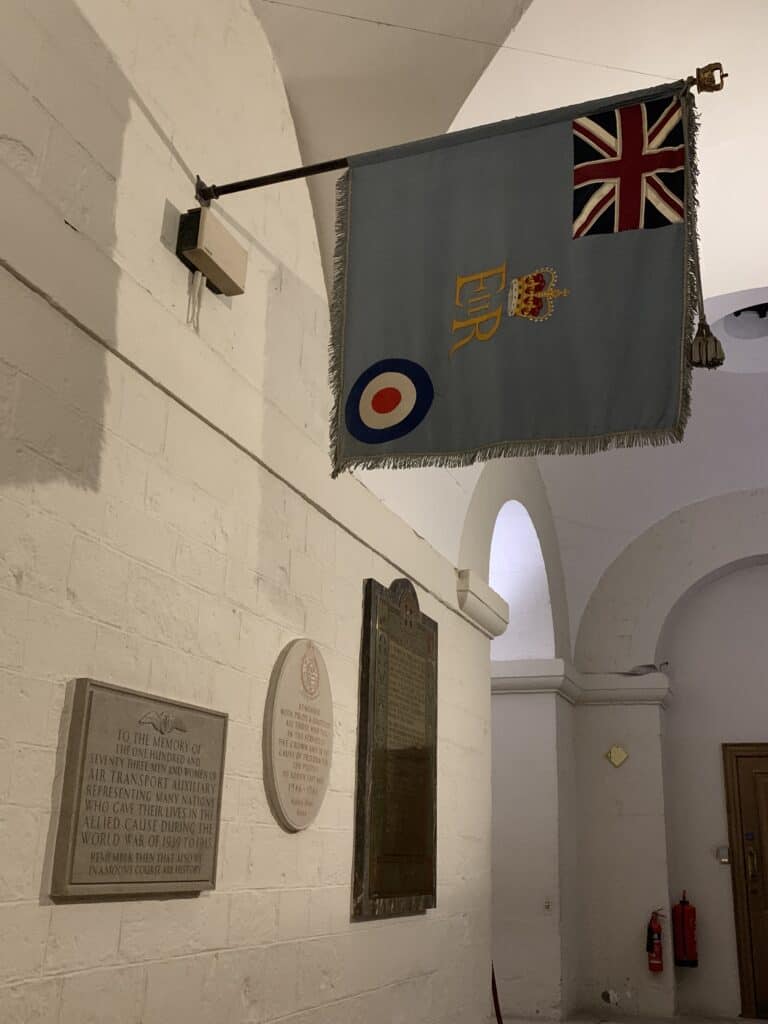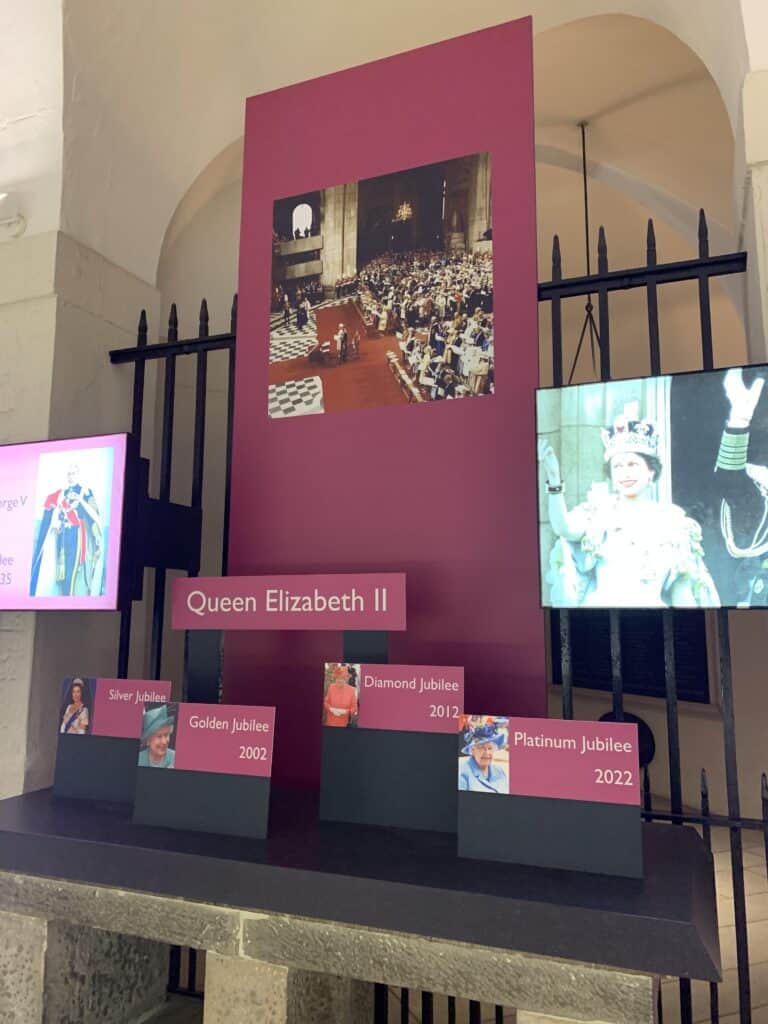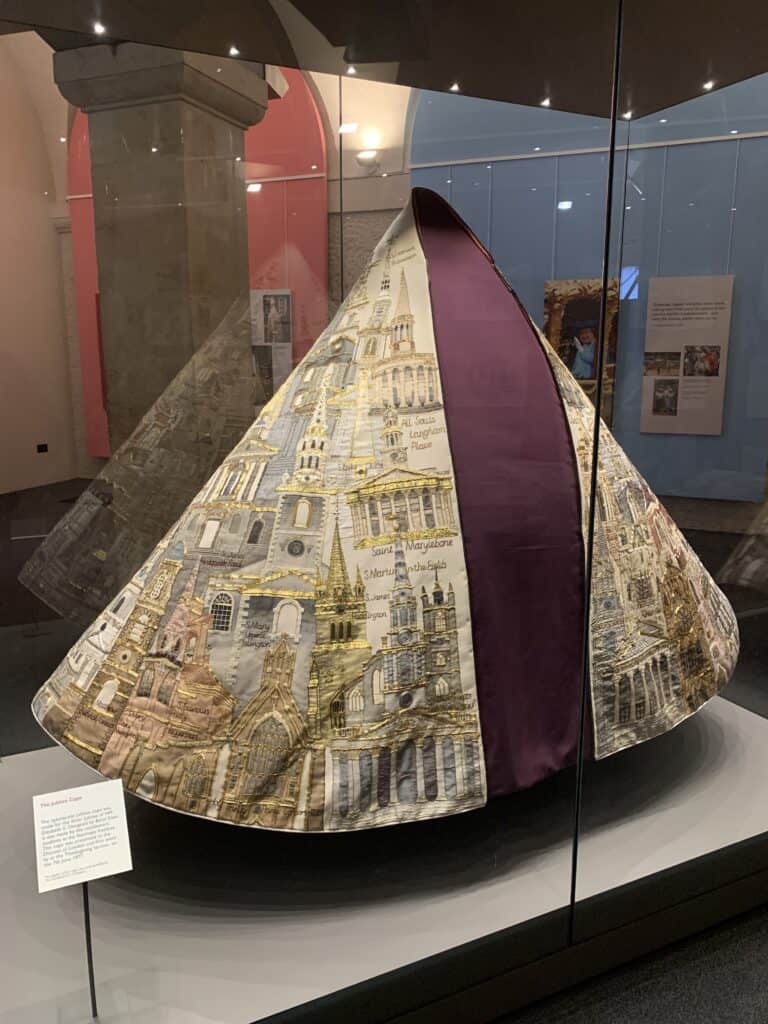
St Paul’s Cathedral was strategically located atop Ludgate Hill in the heart of what is now the City of London.
Built in 1675 in Baroque style, it was completed in 1711 and replaced the thirteenth-century Old St Paul’s Cathedral, destroyed with the Great Fire of London in 1666.
St Paul’s Cathedral is considered the first Protestant Cathedral in the world and has been the site of some of the UK’s most important events such as Nelson’s funeral, Churchill’s funeral and the wedding of Charles and Diana.
The main façade, to the west of the Cathedral, has two flights of stairs and a Corinthian portico surmounted by a pediment whose engravings illustrate the conversion of St. Paul.
The portico is flanked by two towers added in 1707. In the right tower (the Clock Tower) is the largest bell in England, the “Great Paul” while, in the left one there are 12 bells.
Its dome, second in size only to that of St. Peter’s Basilica in the Vatican, is for Londoners the symbol of the city.
In the Crypt there are the Treasury of the Cathedral, the tombs and memorials of famous people and famous heroes. At the centre of the crypt are the granite sarcophagus of the Duke of Wellington and the black marble tomb of Admiral Nelson, hero of Trafalgar.
The Cathedral escaped in an almost miraculous way from the bombings of the Second World War, it is a symbol of which all Londoners are proud and which demonstrates the typical ability of London to recover from historical tragedies.

